Equalizer hitches are a popular choice for towing trailers and RVs.
They offer a unique design that distributes weight evenly between the tow vehicle and the trailer, which can improve stability and safety on the road.
In this article, we will be reviewing some of the best equalizer hitches on the market and discussing their features, pros, and cons.
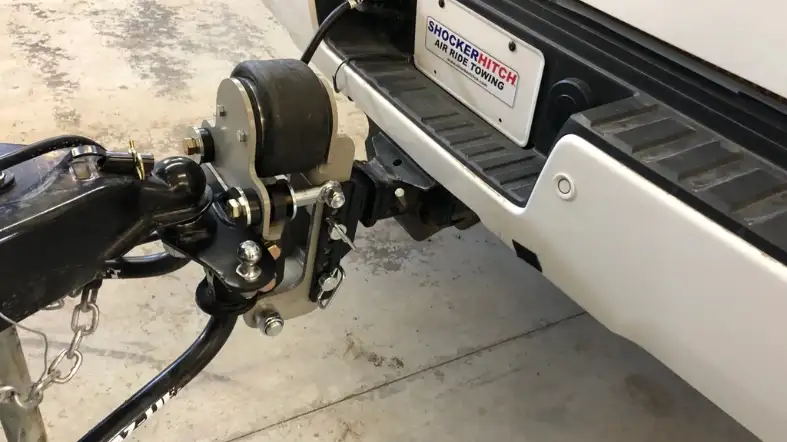
Equalizer Hitch Reviews:
It’s been 75 years, and Equalizer hitches keep families safe on the road and become a reliable brand to depend on.
So if you want to deal with a brand that has a verified system used by thousands of trailer owners, Equalizer is your way to go.
The Equalizer hitch offers the best sway control and weight distribution hitch.
The strength and design of the Equalizer hitch can control and prevent unwanted trailer movement more effectively than other typical sway control and weight distribution hitch device out there.
Following are some key features that help Equalizer hitch outperforms its opponents in handling trailer movements.
Stronger Hitch
Made of American steel, the spring arms of the Equalizer hitch are truly stronger enough to offer more stability and dampening to avoid bumper sag bouncing.
Its heavy strength makes downward pressure on the tough brackets to ensure more dampening and stability to control and prevent trailer roll or lean.
In terms of capacity, the Equalizer hitch won’t disappoint you at all.
Its tongue and trailer weight capacity range from 400/4000lbs to 1600/16000lbs. hence you can easily pick the best Equalizer hitch based on your towing needs.
4-Point Active Sway Control
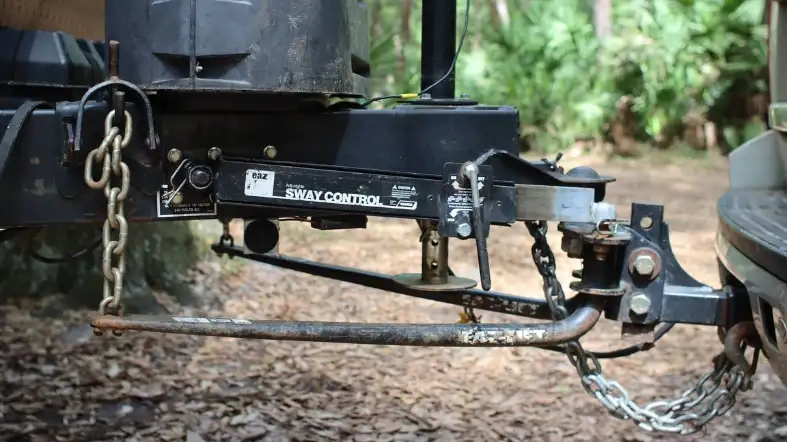
The 4-point friction sway control of the Equalizer reduces and resists fish-tailing or trailer wagging.
Doesn’t matter whether you are driving on a winding road and curving back and forth or going straight line, you’ll have the same performance from this hitch.
The Equalizer hitch works constantly to help the trailer follow the tow vehicle avoiding swinging back and forth.
The 4 Point Sway Control of this Equalizer hitch also offers the maximum resistance against sway.
Spring Arm Design
The Equalizer WDH features trunnion-style spring arms to deliver 4 points of friction for the sway.
These Trunnion arms also ensure better ground clearance compared to the typical round bar style spring arms.
Eliminate the Need of Disconnecting to Back Up
An exciting benefit of owning an Equalizer hitch is that you won’t have to disconnect it during backing up.
However, you may need to disengage the WDH before backing or towing the trailer particularly if there is a large transition in grade.
The reason is that it put much more strain on the hitch. For example, back up from a level surface to a steep uphill.
Rigid Trailer Brackets
Design with a unique rigid bracket, the Equalizer hitch offers two extra incorporated friction sway control points and loading the spring arms activate these points.
The rigid brackets help prevent the side-to-side spring bar movement effectively to ensure improved stability and make the journey the most secure.
Trailer Compatibility
The Equalizer hitches are an extremely versatile option and fit for both busy customers and casual users.
In addition, these hitches perfectly work with almost any horse, cargo, RV, boat, and utility trailer.
You can still install this hitch on your trailer confidently even if it has surge brakes.
Ease Of Use
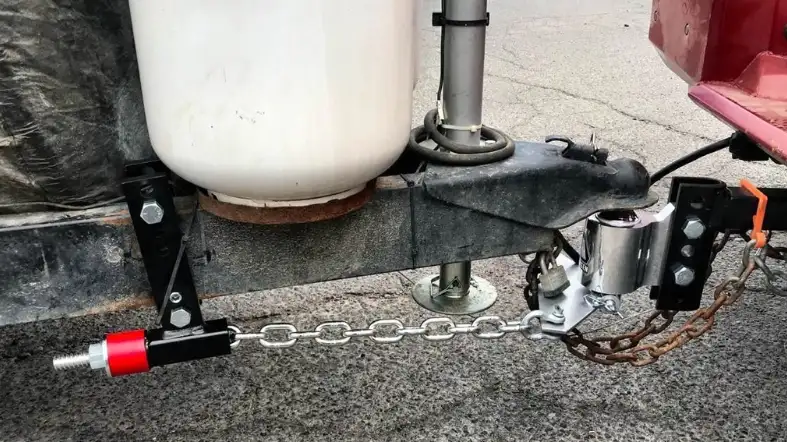
One of the best selling points of this Equalizer hitch is that it is very easy to use for anyone.
You can hitch and unhitch these devices conveniently from any angle. Its adjustment is also fairly simple.
Hence you won’t have to struggle or spend much effort or time handling the Equalizer hitch.
Hitch receiver
The shank of the Equalizer WDH system fits a 2-inch receiver opening and works great with a vehicle with Class III and Class IV hitch.
Some heavy-duty trucks have class V hitch with a 2 1/2″ or a 3″ opening.
To fit an Equalizer hitch in such a vehicle, you have to buy only the hitch and then purchase the required-sized shank separately.
Though you can use an adapter to attach a 2-inch shank to a 2 1/2″ receiver, it can reduce the tow weight.
Some Potential Downside of Equal-i-zer Hitch
Creaking Noise
Lubricating the contact area reduces the friction and ends up lowering the anti-sway capability, hence you can’t do it.
However, the continuous friction can produce creaking and groaning noise especially during making tight turns at a slow speed which is also annoying and embarrassing.
Like the other typical hitches, it’s also true for the Equalizer WDH system.
To solve this issue, the manufacturer provides a sway bracket jacket to reduce the annoying noise.
But unfortunately, this jacket doesn’t fit the 4,000-pound Equalizer WDH and it’s particularly intended for a hitch with 6000 pounds and more.
Not Suitable for Rough Roads
The Equalizer trailer hitch isn’t recommended to use on tough roads, through dips, ditches, and swales.
The manufacturer also discourages to use of their hitches during launching a boat.
The reason is that doing those attempts put too much strain on the hitch head and spring arms and may end up causing hitch fatigue or failure.
In addition, you have to pay more attention during towing the trailer on bouncy, tough, or poorly maintained roads.
How To Hitch And Unhitch The Equal-I-Zer Hitch?
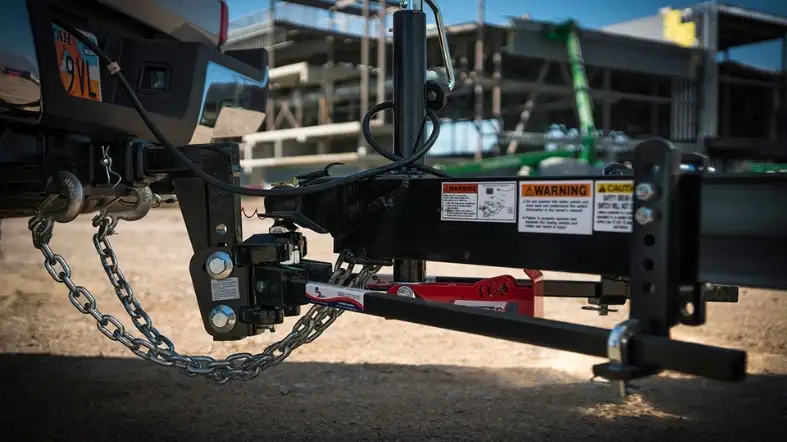
Following are the essential steps to attach the tow vehicle to the trailer using Equal-i-zer hitch:
- Start with lifting the trailer hitch coupler using a trailer jack to maneuver the hitch ball under the trailer coupler conveniently.
- Line up the trailer and tow the vehicle in a way so the hitch ball comes under the coupler.
- Lower the coupler using a tongue jack so it can come close to the hitch ball. Once done, secure the coupler latch.
- After that lift the trailer and tow the vehicle using the tongue jack so you can install the weight distribution arms onto the “L” brackets conveniently. If you can’t do so using a tongue jack, use a snap lever to push the arms onto the brackets.
- Secure the spring arms to the brackets by installing the “L” pins.
- Now retract the tongue jack into the stored position to lower the tow vehicle and trailer.
- Finally connect all the safety brakes, safety chains, trailer electrical connection, and other essential things to make the setup ready to start towing.
To unhitch the trailer from your tow vehicle, simply reverse the steps mentioned above.
How to Find the Perfect Equalizer Hitch for Your Trailer?
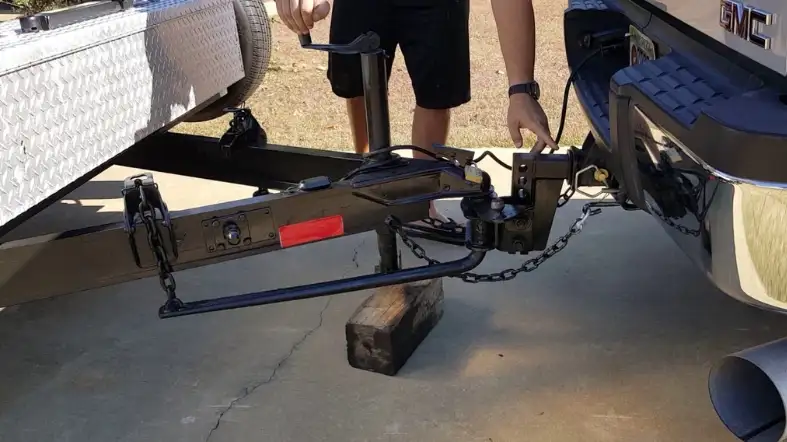
The Equalizer Hitches are available in various part numbers with a 2-inch shank to fit a 2-inch hitch receiver.
In addition, these hitches support up to a 7-inch rise and a 3-inch drop. The part numbers vary based on the hitch’s weight capability.
The gross trailer weight of the Equalizer Hitch ranges from 4000 pounds to 14000 pounds.
Though the manufacturer offers two calculators including a “calculator to figure out shank size and calculator to figure out a required hitch with weight rating”, below is the manual process:
Determine the Hitch Weight Rating
The hitch you’ll use have to be able to support the gross trailer weight.
However, it shouldn’t have too high a weight rating as it can cause improper function.
Hence it’s essential to find out the actual weight and tongue weight of the trailer and then opt for the hitch that has a bit higher weight rating.
In this case, you can take the aid of the manufacturer’s suggestion or check your trailer’s placard.
Find out the Required Size Shank
The next information is to figure out the amount of rise or drop between your vehicle’s hitch receiver and the trailer’s coupler.
In this cake, this online calculator from the brand can help.
Typically the Equalizer hitches shank offers a 7-inch rise and a 3-inch drop.
But if your setup requires higher rise or drop pick the right-sized shank individually and use it with your equalizer hitch.
Figure out the Trailer Frame’s Height at the Front of the Trailer
Typically Equalizer hitches fit up to a 6-inch frame.
So if your trailer has 7 inches or 8-inch frame, it won’t fit.
Hence you may need to consider alternatives.
FAQs about Equalizer hitch review
Does Equal-I-Zer Hitch Help With Sway?
Yes, the patented head of the Equalizer hitch makes two powerful points of rotating friction.
These prevent side-to-side sway before starting.
The upward pressure on the spring arms and the downward pressure of the trailer tongue activates the sway control.
Should You Grease My Equal-I-Zer Hitch?
Lubricating the friction surfaces of the head using bearing grease or multi-purpose grease can help keep them clean and well-lubricated.
But lubricating can contact area can reduce friction and lower the anti-sway capability.
Can You Use An Equal-I-Zer Hitch With Higher Rated Weight Distribution?
You shouldn’t. Using too much weight distributional hitch that requires can brake and axle and causes failure.
Final Words
After reading this comprehensive Equalizer hitch review, hope you’ve got enough idea to make the final call.
As you can see there are plenty of reasons to choose an Equalizer hitch while a few minor reasons may discourage you.
Overall Equalizer hitch is a proven quality and reliable brand to deal with to make the towing task convenient and safe. However, look out for those rough terrains.
